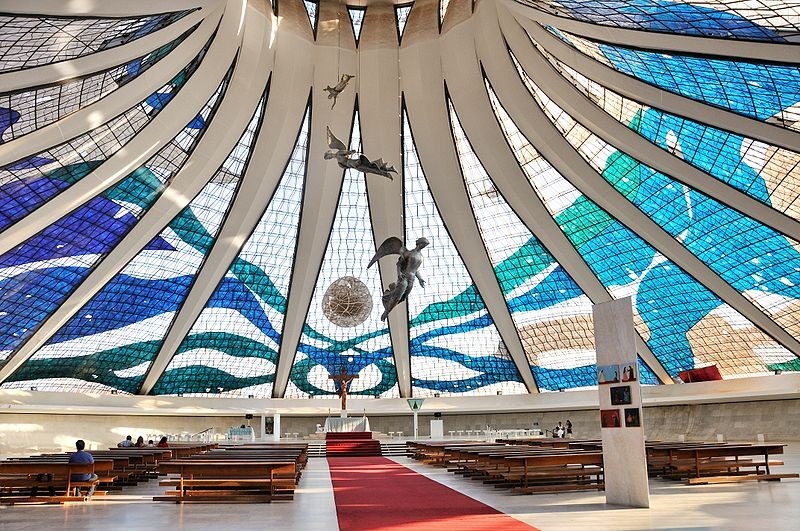Medieval castle architecture represents an important structural heritage shaping the historical fabric of Europe. Serving as symbols of power and centers of social life at the time of their construction, these castles have undergone a continuous evolution over the ages. Depending on their portability and strategic location, castles were built in different styles and functions over time. Medieval castle architecture is still an important historical landmark that carries the traces of the past and still attracts tourists today.
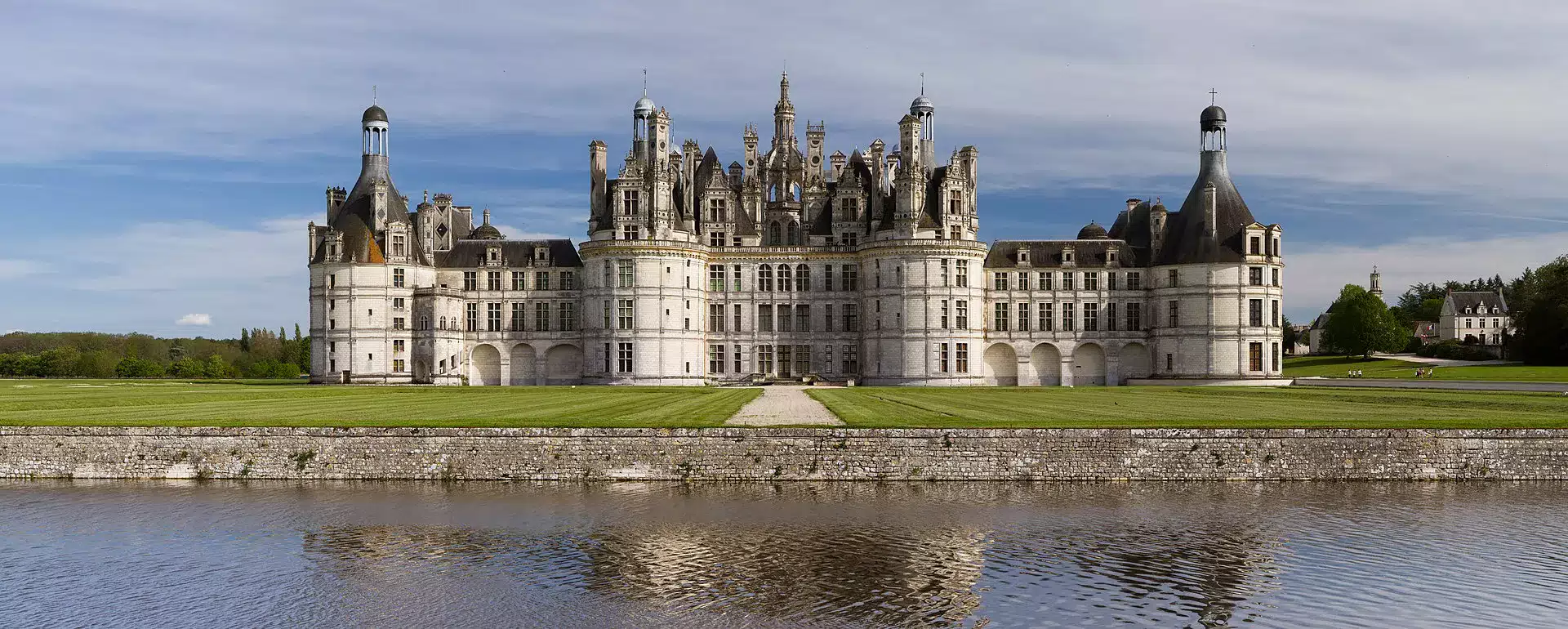
Let’s examine the Evolution of Medieval Castle Architecture and the Middle Ages together…Let’s examine the Evolution of Medieval Castle Architecture and the Middle Ages together…
Art and Architecture in the Middle Ages
Throughout the Middle Ages, art and architecture were deeply influenced by the patronage of wealthy Italian and French princes, who often hired foreign artists. This patronage resulted in a blending of styles known as “International Gothic“, which spread throughout Europe by 1400. Especially during this period, striking sculptures and complex miniature artworks emerged.
Across Europe, secular art flourished, especially in the 15th century, under the growing influence of the merchant classes in Italy and Flanders. These patrons commissioned various works of art, including small portraits and luxury items such as jewelry, cassone chests and maiolica pottery. In regions such as France and Flanders, tapestry weaving became a thriving luxury industry, exemplified by works such as The Lady and the Unicorn.



In Italy, Florence emerged as a center of intellectual and artistic activity during the Quattrocento. The powerful Medici family played an important role, building an important collection of classical sculpture and supporting local artists. Architecturally, names like Brunelleschi revolutionized design, taking inspiration from ancient structures like the Pantheon in Rome. Brunelleschi’s dome for the Florence Cathedral showcased innovations such as single-point perspective, as seen in Lorenzo Ghiberti‘s reliefs on the bronze door of the Florence Baptistery.
Early Renaissance artists, such as Donatello‘s bronze David and Botticelli‘s Birth of Venus revived classical themes, including the nudity and eroticism seen in works such as Jan van Eyck also made advances in technique, using oil paint to create lifelike representations, as seen in the Ghent Altarpiece.



The proliferation of printing presses in Europe in the mid-15th century signaled a new era of mass production. Developments such as block books, which combined illustrations with text, made cheap playing cards and religious paintings widespread. Biblia pauperum and Ars moriendi “Balamber, B. (2018). The Art of Dying Well in the Fifteenth Century: ARS MORIENDI. Journal of the Institute of Fine Arts (40), 117-133.” While popular publications such as “Ars moriendi” appealed to different interests, horror stories, including those about Voyvoda the Impaler, captivated readers. This period culminated in 1493 with the publication of the Nuremberg Chronicle, the first large illustrated printed book of its kind.
Early Medieval Castles (9th-11th centuries)
Castles in the early medieval period were not the large fortresses we often imagine today. They were simple structures built primarily for defense and protection. These early castles were typically made of wood and earth, with wooden palisades and towers. The design of these castles was influenced by the need for security in a period of constant warfare and raids.
Motte and Bailey Castles
Construction and Settlement
Motte-and-bailey castles were a common type of early medieval castle dating from the 9th to the 11th century. These castles were characterized by their simple but effective design, consisting of a raised earthen mound known as a motte and an enclosed courtyard known as a bailey.
The Motte was an artificial mound, typically made of earth and sometimes reinforced with stone, which served as the foundation for the main structure of the castle. At the top of the motte was a wooden tower or castle that served as the residence of the lord or noble who owned the castle. The tower provided a strategic advantage by offering a commanding view of the surrounding landscape and allowed defenders to spot approaching enemies.







The bailey, on the other hand, was an enclosed courtyard at the base of the motte. It was surrounded by a wooden palisade, a fence made of upright stakes. The palisade provided additional protection for the castle’s inhabitants and acted as a barrier against potential attackers. Access to the bailey was usually via a wooden bridge connecting the motte to the bailey.
Advantages and Disadvantages
Motte-and-bailey castles had several advantages that made them popular in the early medieval period. One of the main advantages was that they were fast and relatively cheap to build. The use of earth and wood made them easier to build than stone castles, which required more time and resources. This allowed lords and nobles to quickly set up defensive fortresses in times of conflict.
Another advantage of Motte-and-bailey castles was their versatility. The design of the castle allowed for changes and additions to be made as needed. For example, if the lord or noble wanted to expand the castle or add additional structures, this could be done relatively easily by extending the bailey or building new towers on the motte.
However, motte-and-bailey castles also had disadvantages. One of the biggest disadvantages was their vulnerability to fire. Since most of the castle was made of wood, it was highly susceptible to being set on fire by flaming bullets or incendiary devices. This made it crucial for the defenders to take effective fire-fighting measures to prevent the castle from collapsing.
Furthermore, the wooden structures of motte-and-bailey castles were prone to decay over time. Exposure to elements such as rain and moisture could cause the wood to rot and weaken, compromising the overall integrity of the castle. Regular maintenance and repairs were necessary to ensure the longevity of the castle’s wooden components.
Despite these disadvantages, motte-and-bailey castles played an important role in the early medieval period. They provided a strong defensive position for lords and nobles, allowing them to assert their authority and protect their lands. The construction and layout of these castles laid the foundation for the development of more sophisticated castle designs in the later medieval period.
“Chateau” Castles
Transition from Wood to Stone
The medieval period saw a significant shift in castle construction from the earlier motte-and-bailey castles to more sophisticated stone castles. This change was driven by the need for greater durability and improved defensive capabilities. Although motte-and-bailey castles served their purpose, their predominantly wooden construction made them vulnerable to fire and decay. The increased use of stone in castle construction provided a more durable and long-lasting solution.


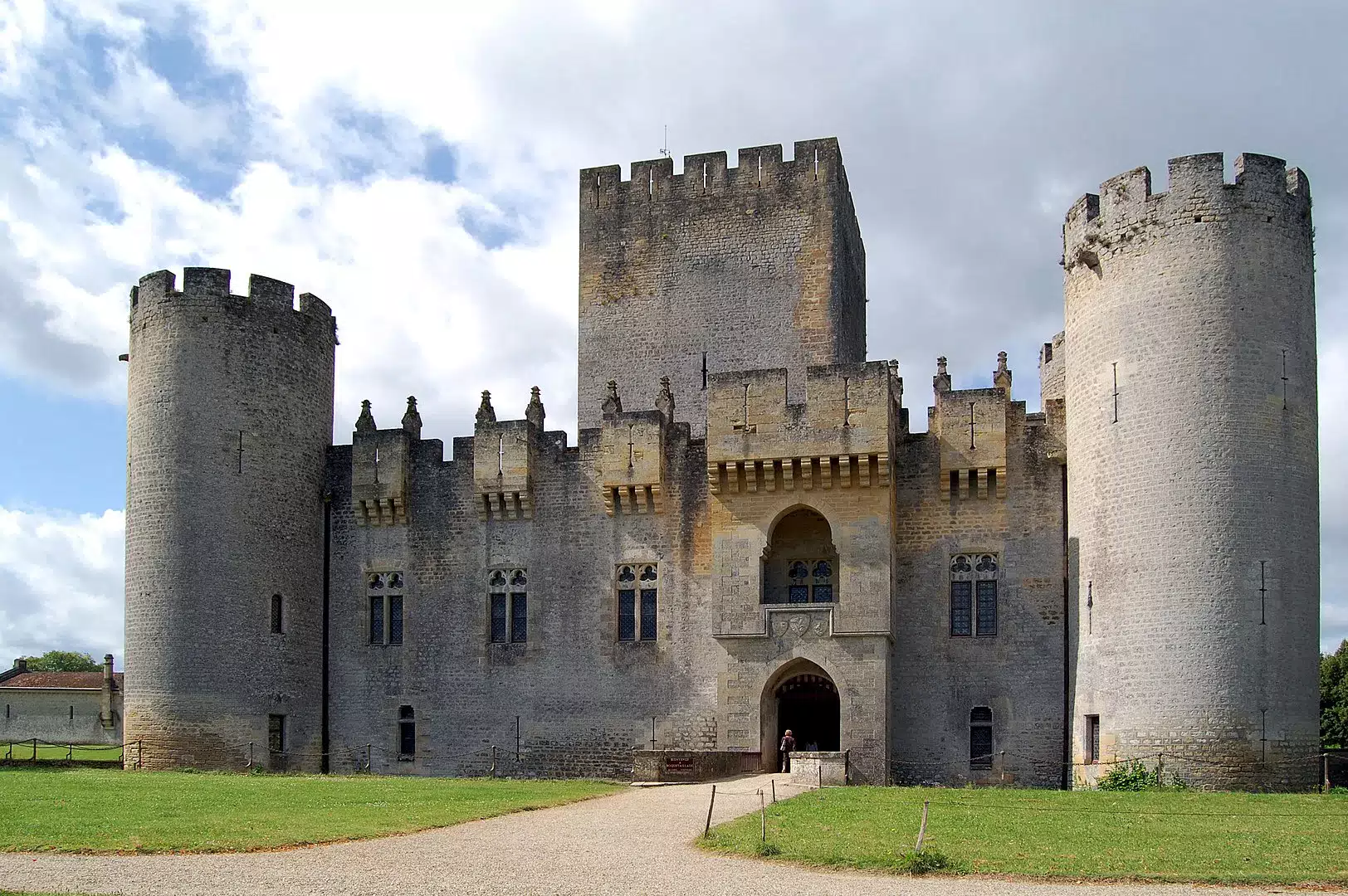


Castles Square or Rectangular Stone Towers
One of the defining characteristics of stone castles is the presence of a central stone tower, known as a keep. These forts were typically square or rectangular in shape and served as the main stronghold of the castle. The use of stone in the construction of castles provided better protection against attacks and offered a more permanent and imposing structure.
The castles of the stone castles were multifunctional. They served as the residence of the lord or noble who owned the castle and provided luxurious living quarters. Castles also housed various rooms and compartments, such as great halls, chapels and storage areas. Castles were also equipped with defensive features such as arrow slits, battlements and fortified entrances to withstand sieges and repel attackers.
The construction of stone castles required skilled craftsmen and considerable resources. The stones used were often cut and shaped to fit precisely, creating solid walls that were difficult to breach. The thickness of the walls also provided insulation against the weather and protection against bullets and battering rams.
Important Examples
Several important examples of stone castles still stand today, demonstrating the architectural and defensive power of this castle design. One such example is the White Tower in The Tower of London in England. Built in the 11th century by William I the Conqueror, the White Tower is an iconic symbol of medieval power and authority. Its massive stone walls and imposing presence make it a formidable structure even today.
Another important stone castle is the Château de Falaise in France. Situated on a rocky outcrop, this castle dates back to the 11th century and was the birthplace of William I. The Château de Falaise is a well-preserved castle that gives visitors an idea of the architectural splendor and defensive capabilities of stone castles.
High Medieval Castles (12th-13th centuries)
Concentric Castles
During the high medieval period, from the 12th to the 13th century, a new type of castle, known as a concentric castle, emerged. These castles were characterized by multiple concentric curtain walls, which provided enhanced defensive capabilities and made them formidable fortresses. The design of concentric castles included several key features that distinguished them from earlier castle designs.
Descriptive Characteristics
The defining feature of concentric fortresses was the presence of more than one concentric curtain wall. These walls were built one inside the other, creating layers of defense. The outer walls were typically lower than the inner walls, giving defenders on high ground a clear advantage over attackers. The concentric layout of these forts made it extremely difficult for enemies to breach the innermost defenses.
In addition to concentric walls, concentric fortresses often had other defensive elements such as towers, gatehouses and moats. Towers were strategically positioned along the curtain walls, providing vantage points for archers and defenders. Gatehouses served as the main entrance to the fortress and were often equipped with drawbridges to control access. Water-filled moats surrounded the castle, acting as a physical barrier and hindering siege tactics.
The concentric design of these fortresses offered several advantages. It allowed for better control of the castle’s perimeter, as attackers would have to overcome multiple layers of defense to reach the innermost areas. The high ground provided by the inner walls gave defenders a clear line of sight, making it easier to repel attacks. The multiple layers of defense also allowed for strategic retreats and retreat positions in case a section of the fortress was breached.
Famous Concentric Castles
One of the most famous examples of concentric castles is Krak des Chevaliers in Syria. Built in the 12th century by the Krak des Chevaliers of the Knights Hospitaller, the Krak des Chevaliers is famous for its massive size and impressive defensive features. Its multiple concentric walls and towers made it almost impenetrable and served as a stronghold for the Crusaders during the medieval period.
Another notable concentric castle is Beaumaris Castle in Wales. Built by Edward I in the late 13th century, Beaumaris Castle was intended to be a symbol of English power and control over Wales. Although the castle was never fully completed, its concentric design illustrates the developments in castle architecture during this period.


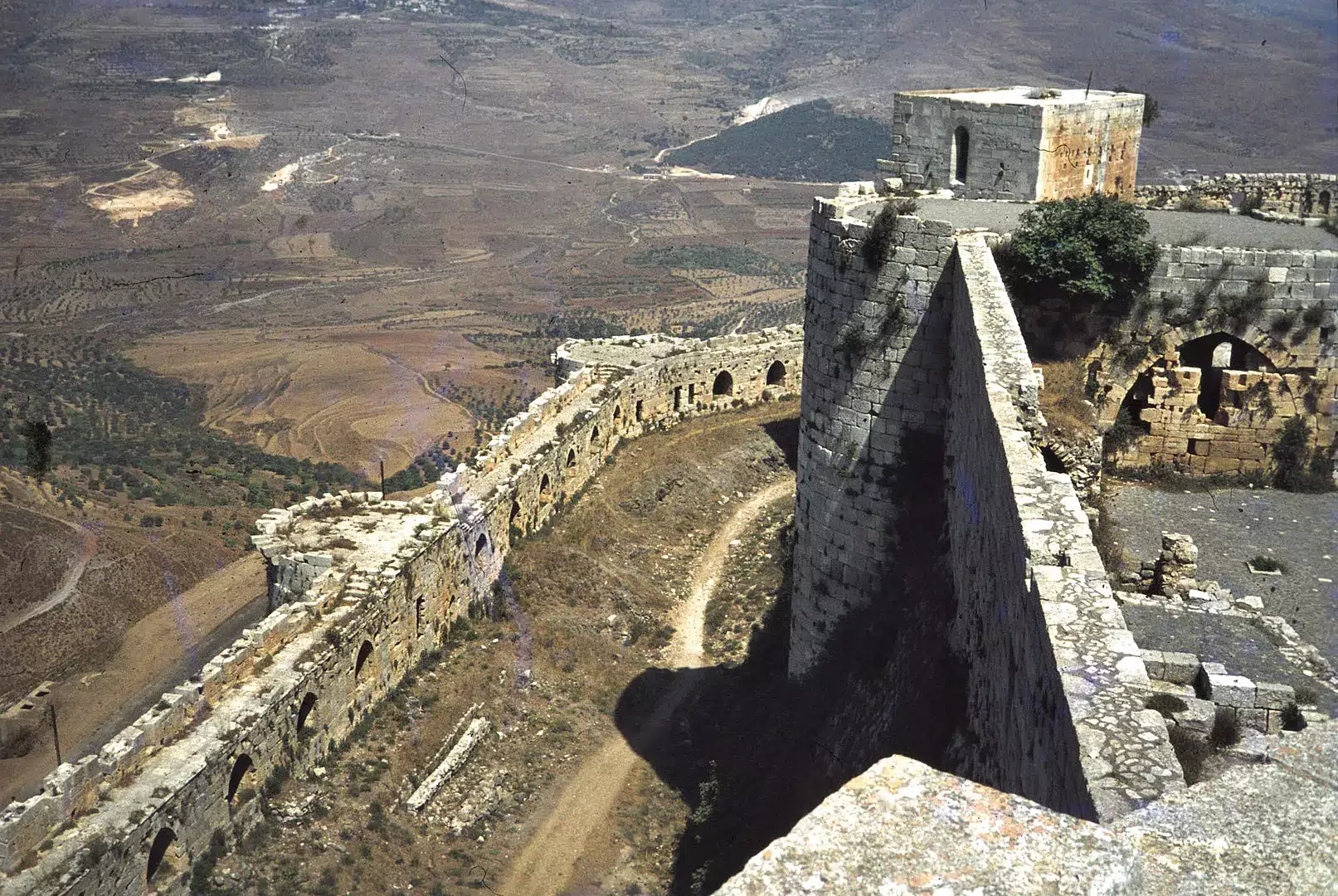




Gothic Castles
Combining Gothic Architectural Elements
The Gothic period, which lasted from the 12th to the 16th century, saw a significant change in castle architecture. Gothic castles emerged combining different architectural elements that set them apart from earlier castle designs. These castles showcased advances in construction techniques and the influence of the Gothic style that emerged in the cathedrals and churches of the period.
One of the most important features of Gothic castles was the use of pointed arches. Pointed arches replaced the round arches commonly found in earlier castle designs. These arches provided structural stability and allowed for the construction of longer and wider interiors.
Another prominent feature of Gothic castles was the use of rib vaults. Rib vaults were a system of intersecting arches that supported the ceilings of castle interiors. These vaults distributed the weight of the structure more efficiently, allowing for larger open spaces and eliminating the need for thick supporting walls. The use of ribbed vaults also added a decorative element to the interior of the castle, with the intersecting arches creating visually striking patterns.


Gothic castles also had large windows, unlike the small, narrow windows of earlier castle designs. These windows were often decorated with intricate ornamentation, allowing more natural light into the castle and creating a sense of openness and grandeur. The use of stained glass in some windows added color to the castle and further enhanced its aesthetic appeal.
Increased Comfort and Luxury
In addition to incorporating Gothic architectural elements, Gothic castles also emphasized greater comfort and luxury for their inhabitants. The larger living spaces of these castles provided more space for noble residents and households. These living spaces often included private rooms, reception halls and areas for entertainment and recreation.
Gothic castles also saw improvements in heating and plumbing systems. Fireplaces became more common, providing warmth and comfort during the cold months. Chimneys were introduced to move smoke out of living spaces and improve air quality. Sanitation systems such as toilets and drainage systems were also incorporated into the design of Gothic castles, improving hygiene and comfort.
Decorative elements played an important role in Gothic castles. Intricate carvings, ornamental details and elaborate tapestries adorned walls, ceilings and furniture. These decorative elements displayed the wealth and status of the castle owners and added to the overall aesthetic appeal of the interiors.
Gothic castles represented a departure from the purely functional and defensive nature of earlier castle designs. They adopted the principles of Gothic architecture and incorporated beauty, elegance and comfort into their structures.
Popular Castles of Gothic Architecture
With its soaring towers, pointed arches and intricate stone work, Gothic architecture is synonymous with the grandeur and mystery of medieval castles. These architectural wonders have captivated the human imagination for centuries and many have become iconic symbols of the Gothic style.
1. Notre-Dame Cathedral – Paris, France
Although not a traditional castle, Paris‘s Notre-Dame Cathedral is one of the most important examples of Gothic architecture. Its striking façade features intricate stone carvings, rose windows and flying buttresses supporting soaring vaulted ceilings. The cathedral’s imposing presence and architectural details have made it an enduring symbol of Gothic design.
2. Bran Castle – Transylvania, Romania
Often associated with the Dracula legend, Bran Castle is a medieval castle located in Transylvania, Romania. While its connection to the fictional vampire is more folkloric than real, the castle’s Gothic architecture is undeniably mesmerizing. Perched atop a hill, Bran Castle features imposing towers, narrow passageways and a commanding presence that evokes a sense of mystery and intrigue.
3. Al-Hamra – Granada, Spain
El-Hamra in Granada, Spain, displays a unique blend of Islamic and Gothic architectural styles. Originally built as a palace for Moorish rulers, this fortress complex features intricate geometric patterns, ornate arches and lush gardens. Al-Hamra’s combination of Gothic elements with Islamic design creates a fascinating aesthetic, making it a UNESCO World Heritage Site and a popular tourist destination.
4. Prague Castle – Prague, Czech Republic
Located in the heart of Prague, Prague Castle is one of the largest castle complexes in the world. This architectural masterpiece combines elements of Gothic, Renaissance and Baroque styles, reflecting the castle’s long history and diverse architectural influences. Prague Castle is a testament to the enduring charm of Gothic architecture with its soaring towers, majestic courtyards and spectacular views of the city. Prague Castle, one of the largest castles in the world, is the largest ancient castle in the world according to the Guinness Book of Records. It is 570 meters long and 130 meters wide.

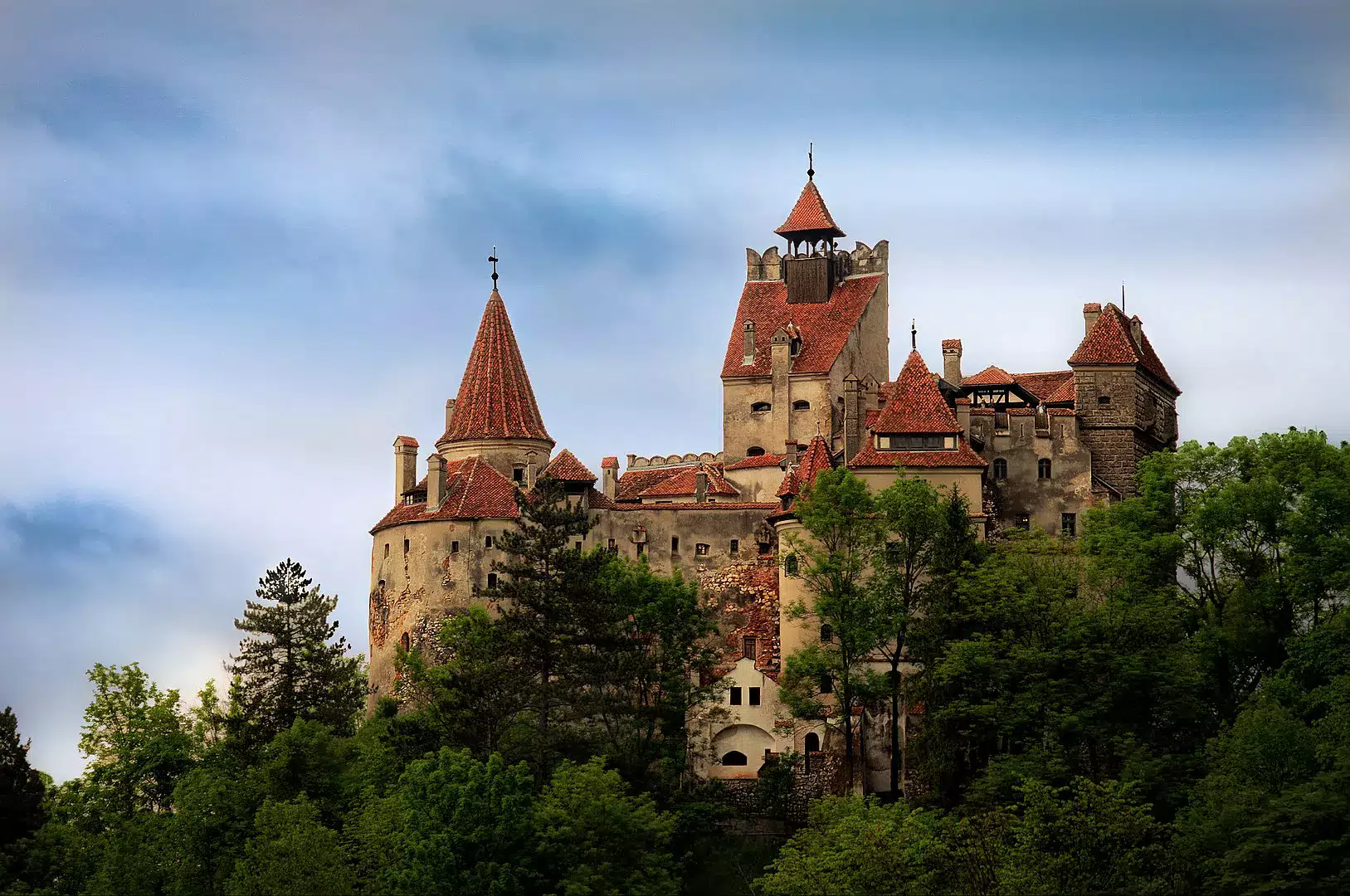


Late Medieval Castles (14th-15th centuries)
The Fall of Castles and the Development of Gunpowder and Cannons
One of the main reasons for the decline of castles in the late medieval period was the advent of gunpowder and cannons. A revolutionary invention, gunpowder had the ability to propel projectiles at high speeds and could cause significant damage to traditional castle walls. Large and powerful cannons, cannons, could penetrate castle defenses and cause serious damage.
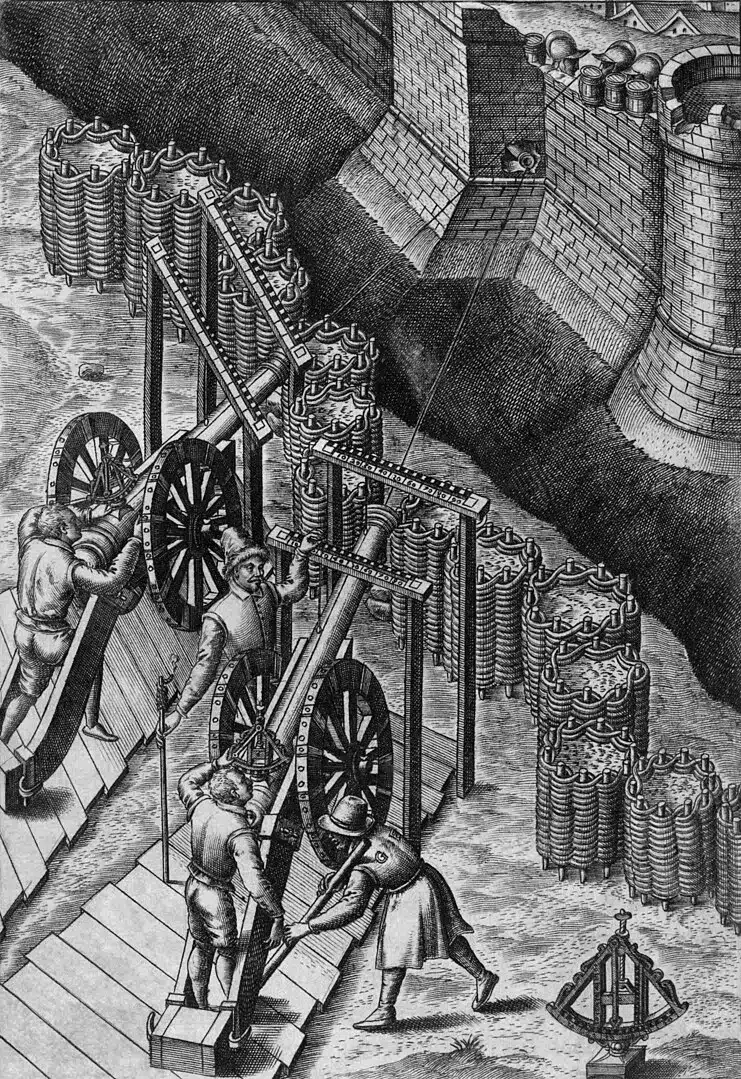

Thick stone walls, once a formidable protection against siege tactics, were now vulnerable to cannon fire. The destructive power of cannon made it harder for castles to withstand prolonged sieges, as the walls could be breached more easily. This shift in military technology marked a turning point in castle design and warfare strategies.
Declining Military Importance of Castles
With the advent of gunpowder weapons, the military importance of castles declined significantly. Castles were no longer impenetrable fortresses that could withstand long sieges. The focus shifted from pure defense to more strategic military tactics such as pitched battles and mobile warfare. Castles became less important in a changing war environment.


Rise of Palace-Castles
As the defensive capabilities of traditional castles declined, a new type of fortified structure emerged: the palace-fortress. These structures combined the elements of a palace, with its emphasis on comfort and luxury, and a castle, with its fortified defenses. Palace-fortresses were designed to fulfill both residential and defensive functions in response to the changing needs of the nobility.
Emphasis on Comfort and Luxury
Unlike the earlier castles, which prioritized defense above all else, the palace-fortress placed more emphasis on comfort and luxury. The living spaces of these buildings were designed to be more spacious and cozy, with larger rooms, grand halls and ornate decorations. The focus shifted from purely military functionality to creating a luxurious and opulent environment for the nobility.
Reduced Defense Capabilities
While palace-fortresses still had defensive features, their defensive capacity was reduced compared to traditional castles. Walls were generally thinner and less reinforced as the emphasis shifted to aesthetics and comfort. Palace-fortress designs aimed to create a sense of grandeur and elegance.
The decline of castles in the late medieval period was a result of the changing nature of warfare and advances in military technology. The rise of gunpowder and cannons rendered traditional castle defenses obsolete, leading to the emergence of palace-fortresses that combined residential luxury with reduced defensive capabilities.
The Structure of Castles and Feudal Order in the Middle Ages
Throughout the Middle Ages, castles, with their strong towers and ramparts, served both as a symbol of power and as the residence of royalty and overlords. They were also used as garrisons. The era of strong castles began in continental Europe after the fall of the Carolingian Empire in the 8th and 9th centuries, when counts assumed authority. For five centuries, the lords of these castles dominated a region, using these strategically important structures to control a territory.
Wars, raids, plundering and invasions were the main factors determining feudal order in the Middle Ages. Without the Norman and Hungarian attacks, there might not have been so much chaos and disorder in Europe. It was inevitable that castles would be built to provide security and people would seek refuge behind the protective walls of the seigneurs. However, with the collapse of the slave empires, a change in the underlying economic structure was inevitable.
Overlords built castles and fortresses, sometimes borrowing money, to protect the authority they received from their king or emperor. The most important parts of these structures were often stone towers, which were used for observation and defense against distant enemies. But towers required specialized workers and craftsmen to build them. Other parts of the buildings were often built by local people, working in a division of labor.
Overlords borrowed money to build castles, but peasants also owed money to their overlords. The peasants had to pay taxes in exchange for the protection of the seigneur and often owned very small plots of land or lived as tenants on the seigneur’s land. The land around the castle was also divided into two parts according to this relationship. One part belonged directly to the overlord and all the animals and buildings on it belonged to the overlord. The other part was where the peasants worked and paid their debts, which also belonged to the overlord. The peasants had small gardens, small enough for them to live on, and paid rent and taxes for the use of these gardens. In the early days of feudalism, peasants gave a large part of their produce to the feudal lord. Overlords were empowered as lawmakers and could impose severe penalties on those who broke the rules.
During the late medieval period, from the 14th to the 15th century, the role and importance of castles began to decline. Several factors contributed to this decline, including the advent of gunpowder and cannons, which made traditional castle defenses vulnerable. As a result, the military importance of castles declined and a new type of fortified structure known as the palace-fortress emerged.
Castles as a Symbol of Power
Political and Social Importance
Castles have been symbols of power and authority throughout history. In the Middle Ages they were political and social centers. The construction of a castle was an expression of wealth and authority and showed the power and influence of the noble families who owned them.
Demonstrations of Wealth and Authority
The grandeur and scale of fortresses were often intended to impress and intimidate. Imposing architecture, fortified walls and strategic locations on hills or near waterways contributed to the perception of power and dominance. Castles were visual representations of the wealth and authority of their owners and served as a constant reminder of their status in society.
Administration and Justice Centers
Castles also served as centers of administration and justice. Within the castle walls, noble owners ran the affairs of their territories, overseeing the administration of their lands, collecting taxes and dispensing justice. Castles often housed administrative offices, courtrooms and prisons, solidifying their role as centers of power and administration.
Architectural Heritage
The architectural legacy of castles extends beyond their own time. The design and construction techniques developed for castles influenced later architectural styles, especially in the construction of palaces and stately homes. Elements found in castles, such as fortified walls, towers and great halls, can be seen in the architecture of palaces and mansions built in the following centuries.
Influence on Later Palace Architecture
The splendor and opulence of the castles had a lasting impact on the design of the palaces. The emphasis on large living spaces, grand halls and ornate decorations in castles set a precedent for the luxurious residences of monarchs and nobles in later periods. The architectural features and design principles of the castles were adapted and developed to create even more elaborate and extravagant palaces.
Conservation and Restoration Works
Recently, there has been a growing interest in the preservation and restoration of castles as historical and cultural landmarks. Many castles that were once in ruins have been meticulously restored to their former glory, allowing visitors to experience the splendor and history of these structures. Conservation efforts ensure that future generations can appreciate the architectural and historical significance of castles.
Castles continue to captivate our imagination with their political and social importance, their architectural legacy and their influence on later palace architecture. As symbols of power and authority, they stand as reminders of a bygone era and testify to the mastery and craftsmanship of the past.
Innovations in Castle Architecture
Defense Features
Fortress architecture evolved over time to include various defensive features aimed at increasing the fortification’s ability to withstand attacks. These innovations played a crucial role in the defense of fortresses and the protection of their inhabitants.
Arrow Slits and Murder Holes
Arrow slits, also known as battlements or arrow loops, were narrow vertical openings in castle walls that allowed archers to fire arrows at attackers. These openings were designed to be small when viewed from the outside and larger when viewed from the inside, allowing archers a greater range of vision and aim. Arrow holes were strategically placed along the walls for optimal coverage and defense.




Murder holes were another defensive feature commonly found in fortresses. These were openings in the ceilings or floors of passageways, gatehouses or other strategic locations. Murder holes allowed defenders to throw projectiles such as stones, boiling oil or even molten lead at attackers below, causing significant damage and acting as a deterrent.
Work Machines and Banners
Machine guns and pavilions were architectural elements that provided fortresses with additional defensive capabilities. Machine guns were projecting galleries or balconies with openings in the floor through which defenders could throw objects at attackers. These structures allowed the defenders to maintain a secure position while still being able to engage in defensive actions.
On the other hand, they were wooden structures that extended from the upper levels of the fortress walls. They provided an elevated platform from which defenders could shoot arrows or attackers could drop objects on them. However, due to their flammable nature, fortress bastions were eventually replaced by stone machine guns, which offered greater durability and resistance to fire.
These innovations in castle architecture demonstrated the ingenuity and adaptability of medieval builders in their quest to create formidable fortresses. Defensive features such as arrow slits, murder holes, machine guns and stacks gave the defenders tactical advantages and significantly increased the castle’s ability to withstand sieges.
Living Space Facilities
Great Halls and Rooms
Within the walls of a castle, domestic amenities were crucial for the comfort and daily life of its inhabitants. The great halls were the heart of the castle and served as large multi-purpose spaces for dining, entertainment and social gatherings. These halls were usually large in scale, with high ceilings, impressive decorations and long tables for the lord and his guests to dine at. The great hall was a place where the lord could display his wealth and power and host banquets and celebrations.
Private rooms were also an important part of castle life. Lords and ladies had their own private rooms, which provided them with privacy and personal space. These rooms were often decorated with luxurious furniture, tapestries and works of art. These rooms served as retreats for lords and ladies, offering a cozy and private environment away from the public spaces of the castle.
Garderobes and Fireplaces
Castle life included some basic amenities that we take for granted today. Garderobes or primitive toilet facilities were an important part of castle life.
Garderobe” is a historical term for a room in a medieval castle. The Oxford English Dictionary gives its first meaning as a storehouse for valuables, but also recognizes it as “in a broad sense, a private room, a bedroom; also a toilet”.
The word is derived from the French word “garde de robes” and means “guardian of clothes (or garments)”: thus, a closet or toilet seat to help prevent clothes from getting dirty.


These were small rooms or closets built on a chute or opening within the castle walls, usually leading to a designated area outside the castle. Though primitive by modern standards, garderobes provided a level of privacy and cleanliness for the castle inhabitants.
Fireplaces were another important feature of castle life. They served both practical and aesthetic purposes. Fireplaces made the castle interiors more comfortable by providing heat during the cold months. They also served as cooking facilities with large hearths where meals could be prepared. Fireplaces were often sumptuous in design, decorated with intricate carvings and ornamentation, adding to the overall ambience and splendor of the castle interior.
These domestic amenities, such as great halls, private rooms, garderobes and fireplaces, were an integral part of castle life. They provided the inhabitants with a sense of comfort, coziness and luxury, showcasing the wealth and status of the noble families residing within these fortified walls.
Legacy of Medieval Castles
Castles as Touristic Places
Medieval castles have transcended their original purpose as fortresses and have become popular tourist attractions around the world. People are eager to discover the rich history, architectural beauty and cultural significance of these majestic structures. Castles offer visitors a glimpse into the past, allowing them to immerse themselves in the world of knights, kings and queens.
Conservation and Restoration Works
Preserving and restoring medieval castles is crucial to ensure their longevity and to continue to share their historical significance with future generations. Governments and private organizations have taken responsibility for maintaining these structures, investing in restoration projects and implementing conservation measures.
State and Private Initiatives
The conservation of medieval castles is often a joint effort between government agencies and private organizations. Governments allocate funds for restoration projects, while private initiatives such as heritage foundations and historical societies contribute their resources and expertise. This partnership ensures that the necessary financial and technical support is available to preserve these architectural treasures.
Challenges in the Maintenance of Historic Buildings
The maintenance of medieval castles presents its own unique challenges. They are often centuries old and their preservation requires attention to detail. Challenges include structural deterioration, weathering and the need for constant maintenance. Balancing the preservation of historic authenticity with the safety and accessibility needs of modern visitors is also a challenge for conservationists.
Popular Castle Destinations
Many medieval castles have gained worldwide recognition and are highly sought-after tourist attractions. Here are three notable examples:
- Windsor Castle (England): Windsor Castle in Berkshire, England, is the oldest and largest inhabited castle in the world. It has been a royal residence for over 900 years and is the official residence of Queen Elizabeth II. Visitors can explore the State Apartments, St. George’s Chapel and the beautiful gardens surrounding the castle.
- Neuschwanstein Castle (Germany): Located in Bavaria, Germany, Neuschwanstein Castle is famous for its fairytale-like appearance. Built in the 19th century, it was the inspiration for Disney‘s Sleeping Beauty Castle. Located in the Bavarian Alps, the castle’s picturesque setting attracts millions of visitors every year.
- Château de Chambord (France): Located in the Loire Valley of France, Château de Chambord is a masterpiece of French Renaissance architecture. Its distinctive French Renaissance style, with its majestic façade and intricate details, makes it one of the most recognized castles in the world. Visitors can explore the castle’s rich interiors and extensive grounds.



These castles, among others, continue to fascinate tourists with their historical significance, architectural splendor and fascinating stories from the past. Serving as reminders of a bygone era, these castles allow visitors to step back in time and experience the splendor and glory of medieval life.
Castles in Popular Culture
Castles in Literature and Cinema
Medieval castles have long captured the imagination of writers and filmmakers, becoming prominent locations in literature and movies. These majestic structures have served as backdrops for historical novels, fantasy series and epic tales of adventure and romance.
In historical novels set in the Middle Ages, castles are often a central element of the story. “The Pillars of the Earth” by Ken Follett and “The Song of Ice and Fire” series, George R.R. Martin have brought castles to life, depicting their splendor, intrigue and the power struggles within their walls.
In the world of film and television, castles have been showcased in various genres. Medieval-inspired films such as “Braveheart” and “Robin Hood” transport viewers into a world of knights and chivalry where castles play an important role in the narrative. “Fantasy series such as Game of Thrones have also emphasized castles, with iconic locations such as Winterfell and King’s Landing becoming synonymous with the show’s popularity.

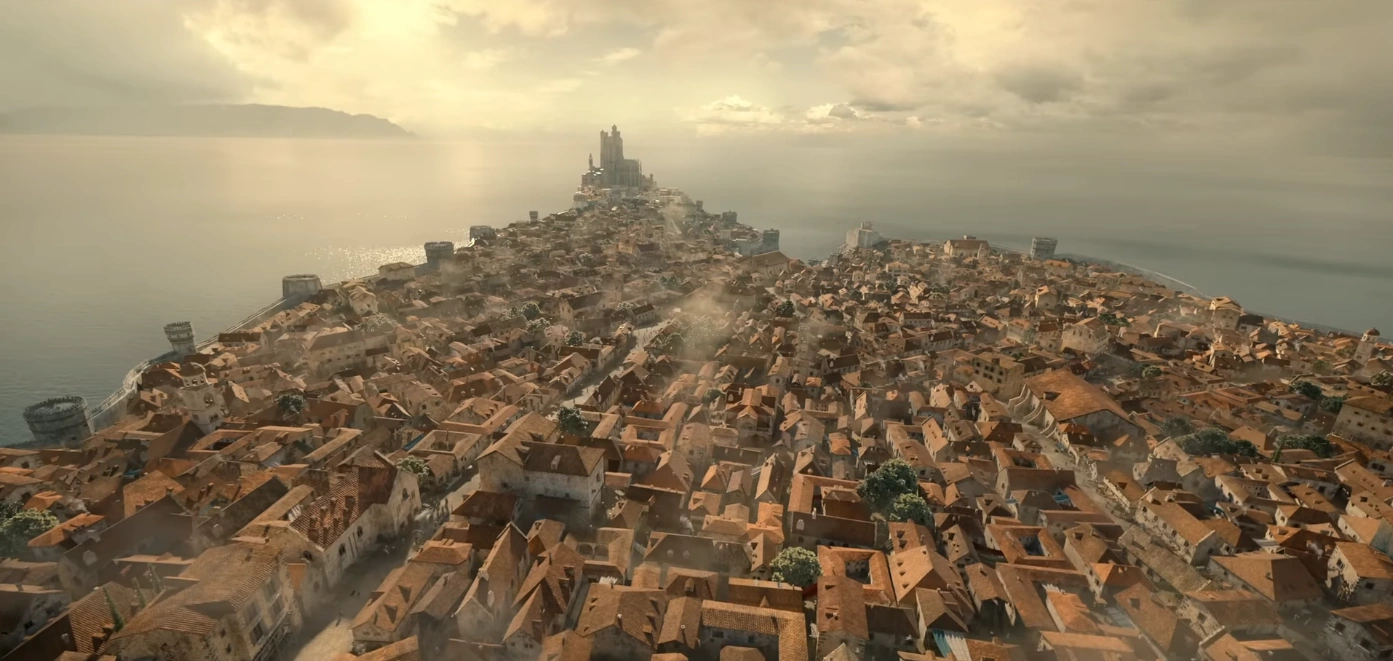
Impact on Modern Architecture
The influence of medieval castles extends beyond literature and movies to modern architecture. Revival styles in the 18th and 19th centuries sought to recreate the grandeur and romance associated with medieval castles.
During the Gothic Revival, architects were inspired by medieval castles and incorporated Gothic architectural elements into their designs. This revival style emphasized pointed arches, ribbed vaults and intricate stone carvings reminiscent of the medieval period. Examples of Gothic Revival architecture include the Palace of Westminster in London and the Basilica Notre-Dame in Montreal.

In addition to revival styles, contemporary architecture has also been influenced by castles. Modern buildings often incorporate castle-like features such as towers, battlements and stone facades to evoke a sense of grandeur and historic charm. These architectural elements can be seen in luxury hotels, private residences and even commercial buildings, adding a medieval charm to the modern world.
The enduring appeal of castles in popular culture has shaped the way we perceive and appreciate architecture. From the pages of novels to the silver screen, castles continue to captivate our imagination and inspire us to explore the rich history and architectural beauty they represent.
Studying and Understanding Medieval Castles
Archaeological Excavations
Archaeological excavations play a crucial role in the study and understanding of medieval castles. Through careful excavation and analysis of castle ruins and artifacts, archaeologists can uncover valuable information about the construction techniques, architectural features and daily life of these structures.
Excavations at castle sites reveal foundations, walls and defensive structures that have stood for centuries. By studying these physical remains, archaeologists can piece together the layout and design of the castle, providing a clearer understanding of its original form and function.
In addition to the structural elements, the artifacts discovered during the excavations offer a glimpse into the daily life of the castle’s inhabitants. Objects such as pottery, tools, weapons and personal belongings provide valuable clues about the social, economic and cultural aspects of medieval society.
Interdisciplinary Research
The study of medieval castles often requires interdisciplinary research, bringing together experts from various fields to gain a comprehensive understanding of these structures and the societies that built and lived in them.
Historians, archaeologists and architects collaborate to combine their expertise and methodologies. Historians provide contextual information about the period, including historical records and narratives of castle construction and use. Archaeologists contribute excavation and artifact analysis skills, uncovering physical evidence that complements historical narratives. Architects shed light on the technical aspects of these structures, providing insights into the engineering and design principles behind castle construction.
This interdisciplinary approach allows researchers to synthesize information from multiple sources, advancing our knowledge of medieval society and culture. Historical records, archaeological findings and architectural analysis can be brought together to create a more comprehensive and accurate picture of medieval castles.
Developing Knowledge of Medieval Society and Culture
The study and understanding of medieval castles contributes to our broader knowledge of medieval society and culture. These structures were centers of power, administration and social life. Through the study of castle ruins, artifacts and historical records, researchers can gain insight into the political, economic and social dynamics of the period.
Castle studies provide valuable insights into the hierarchy and social structure of medieval society. The layout and design of castles can reveal the division of spaces for different social classes, such as the living quarters of the lord and lady, the great hall for banquets and meetings, and barracks for soldiers.
Furthermore, artifacts discovered at fortress sites offer insights into the material culture and daily life of the fortress inhabitants. From the types of pottery used to the tools and weapons found, researchers can piece together a more nuanced understanding of the activities, occupations and lifestyles of the people who lived and worked within the fortress walls.
By studying and understanding medieval castles, researchers can uncover the complexity of medieval society and shed light on the political, social and cultural dynamics of the period.
Frequently Asked Questions (FAQ)
- What is medieval castle architecture?
- Medieval castle architecture refers to the architectural style of castles built during the Middle Ages. This style includes special design and construction techniques used in castles built for defense.
- How medieval castle architecture developed
- Medieval castle architecture evolved over time with more effective defense systems and building techniques. In the early period, castles were simpler and more vulnerable, but over time, more complex and powerful structures were built.
- What features does medieval castle architecture have?
- Medieval castle architecture has features such as high and thick walls, defensive towers, moats, castle courtyards, structures inside the castle and defense systems. Moreover, castles were often built in strategic locations and supported by natural obstacles.
- What are the defense systems of medieval castles?
- The defense systems of medieval castles include castle walls, defense towers, moats, castle gates, range towers, ballistic defense systems (arrow and spear throwing), castle courtyards and inner castle structures.
- Why is medieval castle architecture so important?
- Medieval castle architecture is a reflection of the war and defense strategies of that period. While these castles symbolized the power and wealth of kingdoms and nobility, they were also meant to ensure the security of a society. They are also of great historical and cultural significance.
- In which periods did medieval castle architecture develop?
- Medieval castle architecture developed in the period from the 9th to the 15th century. This period led to the emergence of different styles of castle architecture in different phases of the Middle Ages.
- What are the most famous examples of medieval castle architecture?
- The most famous examples of medieval castle architecture include Carcassonne Castle (France), Bodiam Castle (England), Krak des Chevaliers (Syria), Hohensalzburg Castle (Austria) and Malbork Castle (Poland).
- How medieval castle architecture had an impressive defense system
- Medieval castle architecture provided an impressive defense with high and thick walls, defensive towers, moats and other defensive systems. These structures were designed to prevent enemy attacks and protect the inhabitants of the castle during enemy attacks. In addition, fortresses were built in strategic locations, giving them the advantage of keeping enemies at bay and anticipating attacks.
- How is medieval castle architecture used today?
- Today, many medieval castles are used as tourist attractions. These castles are popular visiting spots for history and architecture buffs. Some castles are also used as museums, hotels or event venues. Medieval castle architecture is still important today as part of our historical and cultural heritage.
- Gotik mimari nedir?.
- Gothic architecture is an architectural style that developed in Europe during the Middle Ages. It is known for features such as high arches, pointed arches, slender columns, large stained glass windows and intricate stonework. Gothic architecture was often used for religious and civil buildings such as churches, cathedrals and castles.
- Why is there so much interest in Gothic architecture?
- Gothic architecture has an impressive and fascinating appearance. Tall arches and towers, large stained glass windows and detailed stonework are the features that attract people. Gothic architecture also has historical and cultural significance as it reflects the religious and cultural heritage of the Middle Ages.
- What are the most famous examples of Gothic architecture?
- The most famous examples of Gothic architecture include Notre-Dame Cathedral (Paris, France), Neuschwanstein Castle (Bavaria, Germany), Bran Castle (Transylvania, Romania), Alhambra (Granada, Spain) and Prague Castle (Prague, Czech Republic).
- In which period did Gothic architecture develop?
- Gothic architecture developed in a period that began in the 12th century and lasted until the 16th century. This period came after the late Romanesque period of the Middle Ages and lasted until the Renaissance.
- Why was Gothic architecture often used in churches?
- Gothic architecture was often used in churches because during this period churches were of great importance as religious and social centers of society. Gothic architecture allowed churches to be built in a remarkable and impressive way, with high arches, stained glass windows and other features used to emphasize the size and grandeur of the churches.
- What are the differences between Gothic architecture and other architectural styles?
- Gothic architecture is different from other architectural styles because it has features such as high arches, pointed arches and large stained glass windows. It has a lighter and more elegant appearance than Romanesque architecture. Gothic architecture also differs from other styles in its more intricate and detailed stonework.
- Is Gothic architecture still in use?
- Although Gothic architecture developed in the Middle Ages, it is still used today. Especially churches and cathedrals preserve the Gothic style and new buildings are being built. Also, buildings and structures designed in the Gothic style are still popular as tourist attractions.
- Why is Gothic architecture considered so impressive and fascinating?
- Gothic architecture is considered impressive and fascinating with features such as high arches, pointed arches, large stained glass windows and detailed stonework. This architectural style stimulates people’s imagination and emotions.
- What distinguishes Gothic architecture from other architectural styles?
- The features that distinguish Gothic architecture from other architectural styles are: high arches, pointed arches, large stained glass windows, slender columns, arched vaults, detailed stonework and ornamentation. These features make Gothic buildings easily distinguishable from other styles.
My Thoughts on the Evolution of Medieval Castle Architecture
Medieval castle architecture is of great importance in Europe’s historical and cultural heritage. Initially, simple castles were built with flimsy materials such as wood and earth, but over time they were built with durable materials such as stone and brick to make them more robust and long-lasting.
During the Middle Ages, the architecture of castles changed in line with security needs and social requirements. While features such as high walls, bastions, moats and defense towers were prominent for defense, social and economic functions such as inner courtyards, residential areas, chapels and commercial spaces were also included in the architecture of castles.
Especially in the later Middle Ages, the architecture of castles focused more on luxury and comfort. Residential buildings, ornate gardens and works of art began to be seen in castles used as the residence of nobles. During this period, the architecture of castles was also used as an indicator of power and wealth.
The architectural evolution of medieval castles is closely linked to political and military changes. The development of war technology influenced and changed the defense systems of castles.
If you haven’t read it yet, you can also check out our Life and Culture in the Ancient City of Ephesus review…

















